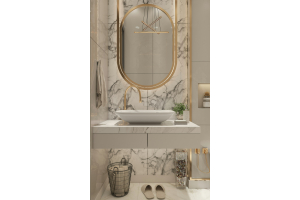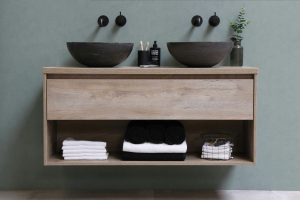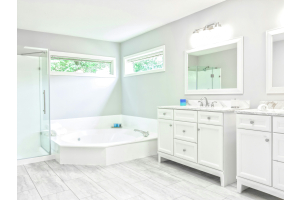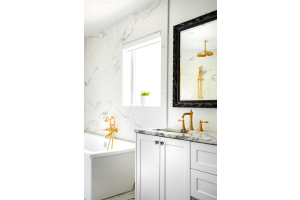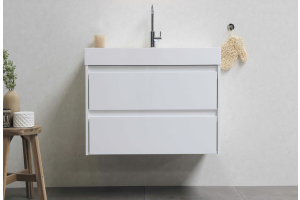They say necessity is the mother of invention, and after World War II, Europe had a major necessity. Basically, it needed to rebuild the entirety of the bombed-out cities as quickly as possible.
Part of this massive undertaking was making sure people’s homes had cabinetry and shelving, which led to standardization in cabinet making that made many cabinets and their associated hardware as simple as possible. You can still see this effect today in many styles of DIY furniture and cabinetry sets purchased from the store and assembled at home.
In the debate between framed versus frameless cabinets, some say this prefabrication makes frameless cabinets look cheap.
Mass Production Doesn’t Mean Lower Quality
If someone chooses the cheapest available DIY cabinetry set from their local big box store and installs it themselves without having the knowledge of a professional carpenter, then yes, it’s possible that it’s going to look cheap. The fiberboard and its cheap veneers will crack, peel, and crumble at the slightest overtightening of a screw or the removal of a door panel to make an adjustment.
We’ve all bought cheap fiberboard bookshelves when we were younger and had a tighter budget, and we’ve all seen how they fall apart if you try to move them or place significant weight on them. This has led to a bad reputation for a lot of prefabricated furniture.
However, by working with a qualified kitchen remodeling specialist and choosing high-quality frameless cabinet materials, you can ensure that not only will your kitchen not look cheap, it will be a sleek and modern masterpiece.
Designed to Make Tight Spaces Look Great
Because space is at a premium in Europe where frameless cabinetry originates, the region excels at making the most of a small kitchen. Frameless cabinets and drawers have the advantage of making the best use of smaller spaces.
This starts when you open the cabinet door and notice that there is no lip around the edge of the door frame like you’d typically see in a more American-style kitchen. This means extra space to store your larger items without having to manipulate them into place.
Smaller Fillers
Do you need fillers with frameless cabinets? Yes, you do, but while the number of fillers you’ll need may be slightly more than framed cabinets, the overall space they take up will be far less.
A filler is an unused space placed between cabinets or drawers–these are a necessity with frameless cabinets at any corner where cabinets and drawers come together and when a cabinet or drawer is near a wall or a countertop. The filler pieces provide space to allow the doors and drawers to open freely without bumping or rubbing into each other and causing wear and tear.
Work With a Pro
Unless you’re already a carpenter who knows how to build frameless cabinets, you should avoid going the DIY route. If you want to avoid the look of cheap prefabricated cabinets, it’s best to work with a cabinetry professional who can guide you to the proper cabinet materials, like those from 27EStore, and install them professionally to ensure maximum quality and aesthetics.

